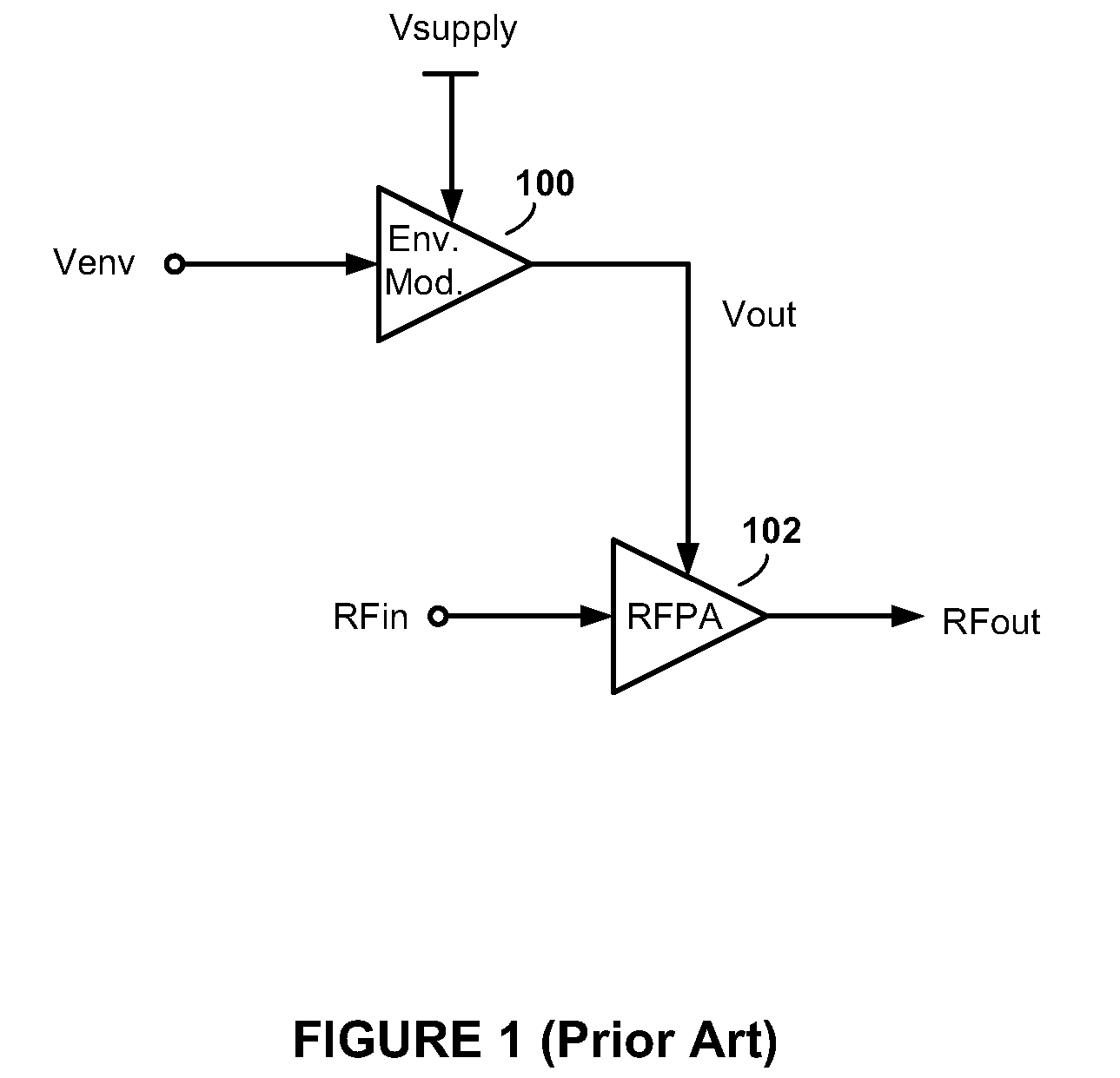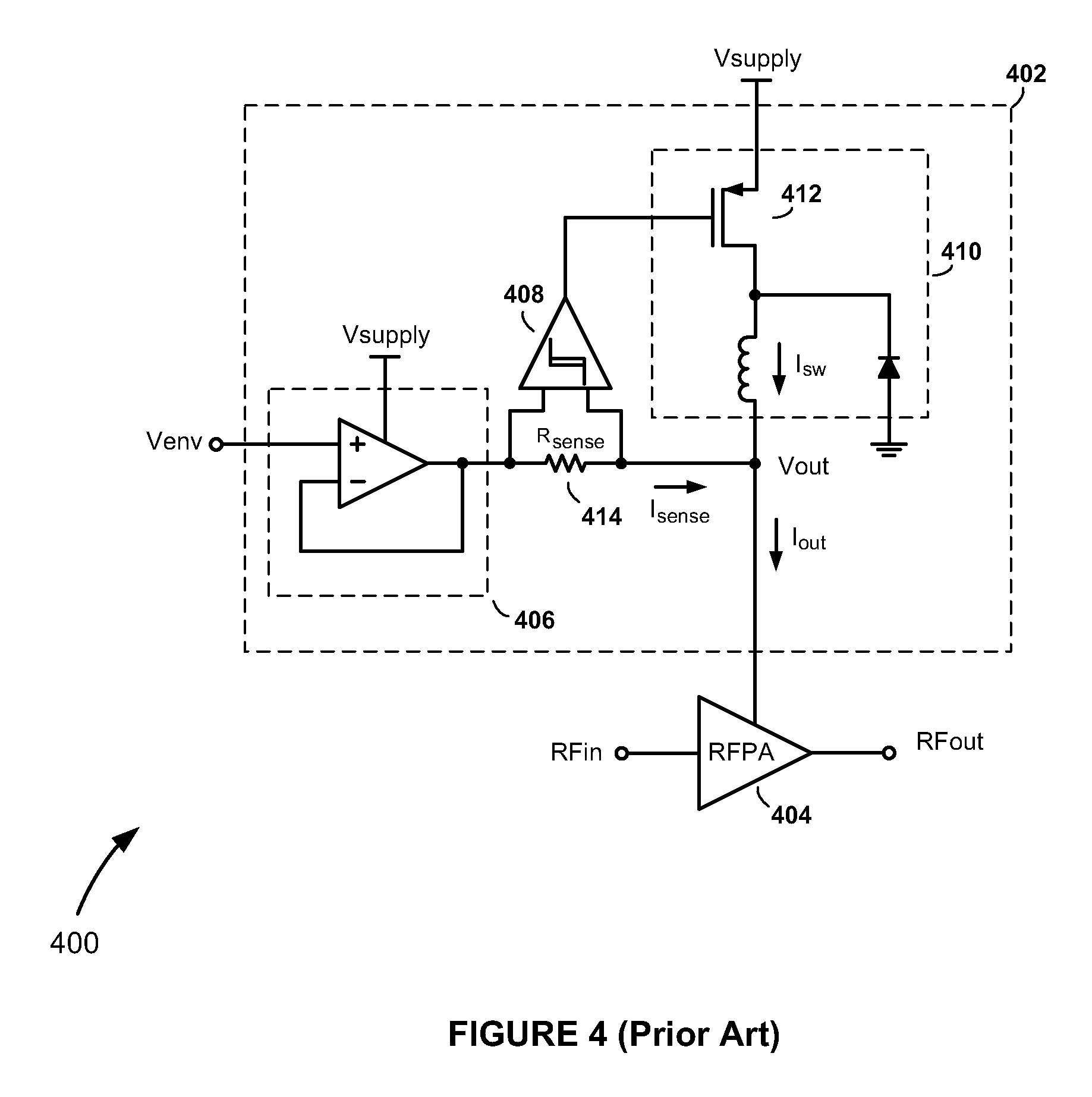High-Efficiency Envelope Tracking Systems and Methods for Radio Frequency Power Amplifiers
a technology of high-efficiency envelope tracking and radio frequency power amplifier, applied in process and machine control, ignition automatic control, instruments, etc., can solve the problems of linear rfpas inefficient, linear rfpas sacrifice efficiency for linearity, and high undesirable efficiency versus linearity trade-off, etc., to reduce efficiency penalty
- Summary
- Abstract
- Description
- Claims
- Application Information
AI Technical Summary
Benefits of technology
Problems solved by technology
Method used
Image
Examples
Embodiment Construction
[0025]Referring to FIG. 5, there is shown an envelope tracking (ET) system 500, according to an embodiment of the present invention. The ET system 500 comprises an envelope modulator 502 and a radio frequency power amplifier (RFPA) 504. The RFPA 504 includes an RF input configured to receive an RF input signal RFin, an RF output configured to provide an RF output signal RFout, and a power supply input configured to receive a dynamically controlled power supply voltage Vout from an output node of the envelope modulator 502.
[0026]The dynamic power control methods and apparatus of the present invention can be used in envelope elimination and restoration (EER) type systems employing nonlinear RFPAs, such as a polar transmitter, as well as in ET type systems employing linear RFPAs. Because the envelope of the input signal envelope is tracked in both EER and ET approaches, the term “envelope tracking” (including its abbreviated form “ET”) is used herein in its most general sense to refer ...
PUM
 Login to View More
Login to View More Abstract
Description
Claims
Application Information
 Login to View More
Login to View More - R&D
- Intellectual Property
- Life Sciences
- Materials
- Tech Scout
- Unparalleled Data Quality
- Higher Quality Content
- 60% Fewer Hallucinations
Browse by: Latest US Patents, China's latest patents, Technical Efficacy Thesaurus, Application Domain, Technology Topic, Popular Technical Reports.
© 2025 PatSnap. All rights reserved.Legal|Privacy policy|Modern Slavery Act Transparency Statement|Sitemap|About US| Contact US: help@patsnap.com



